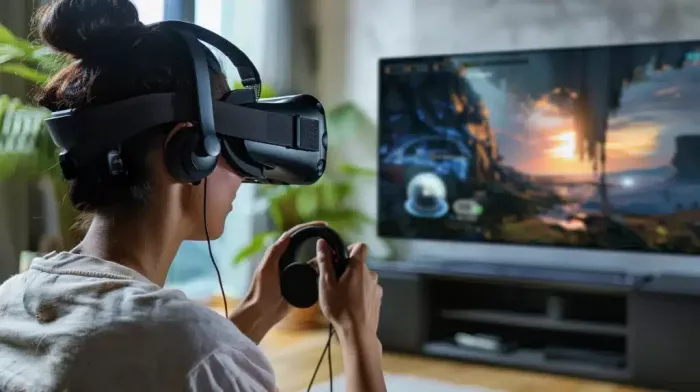From Casual Pastime to Dominant Entertainment Channel
The rapid evolution of mobile gaming has transformed it from a casual activity into one of the most dominant forms of digital entertainment worldwide. With smartphones becoming more powerful, accessible, and central to daily life, mobile games now occupy a space previously reserved for console and PC experiences. This shift has impacted every corner of the gaming industry, and casino game app development is no exception. In fact, the rise of mobile gaming has played a pivotal role in reshaping how developers, studios, and businesses approach game design, user engagement, and monetization.
Today’s mobile gaming landscape is more competitive and dynamic than ever. Players expect instant access, immersive visuals, real-time interaction, and meaningful rewards — all from the palm of their hand. Whether they are swiping through match-three puzzles, battling it out in strategy games, or spinning virtual slot reels, users demand seamless performance and high-quality content. These expectations continue to drive innovation, not only in game mechanics but also in the technology, infrastructure, and user experience that support mobile gaming.
The Influence of User Behavior on Game Design
Understanding how users interact with mobile games is essential for developers who want to remain relevant. Modern players tend to engage in short, frequent sessions throughout the day. They want gameplay that’s easy to pick up but deep enough to keep them coming back. This pattern has significantly influenced the design of mobile games across genres, including casino apps. Game loops are now optimized for quick rewards, intuitive mechanics, and social features that enhance the sense of community without requiring long play sessions.
This shift in user behavior also extends to the way people discover and share games. Social media integration, in-app sharing, and influencer-driven promotion have become integral components of the mobile gaming ecosystem. Casino game developers, in particular, have embraced these tools to create viral challenges, loyalty programs, and tournaments that drive engagement. The ability to invite friends, compete on leaderboards, or join guilds and clubs adds a layer of interaction that keeps users invested over time.
As players become more selective and informed, developers must fine-tune every aspect of the user experience. From onboarding and tutorials to monetization and customer support, every interaction must feel smooth, intuitive, and rewarding. It’s not just about making a game — it’s about building a complete, user-centered experience that lives on a mobile device but resonates far beyond it.
Technology as the Backbone of Innovation

The mobile gaming boom wouldn’t be possible without the technological advancements that support it. Faster internet speeds, cloud-based services, and improved mobile processors have laid the groundwork for high-performance gaming on the go. Casino games, which often rely on real-time transactions, animations, and networking, have particularly benefited from these innovations. What once required a desktop is now handled effortlessly by a smartphone in your pocket.
Developers are also leveraging advanced analytics, AI, and machine learning to tailor gaming experiences. Personalization is becoming a defining feature of modern mobile games. Algorithms can now adjust difficulty levels, suggest in-game purchases, or curate daily challenges based on player behavior. This kind of intelligent design is especially relevant in casino game apps, where retaining users and optimizing lifetime value are key performance indicators.
Another exciting frontier is the integration of augmented reality (AR) and virtual reality (VR) into mobile gaming. While still in early stages, these technologies offer immersive experiences that could soon become standard, especially as hardware improves. Imagine walking through a virtual casino rendered in 3D, playing at lifelike tables, and interacting with other players — all through your phone or wearable device. The possibilities are expanding, and developers must stay ahead of the curve to capitalize on these trends.
Monetization Models That Work
As mobile gaming becomes more sophisticated, so do its monetization strategies. The days of simply charging for downloads are long gone. Now, free-to-play models dominate, with revenue generated through in-app purchases, subscriptions, and advertising. For casino game apps, this opens up multiple channels of income, including virtual currency packs, VIP memberships, and cosmetic upgrades.
However, successful monetization must be balanced carefully with user satisfaction. Players are quick to abandon games that feel exploitative or overly commercial. Smart developers use data-driven insights to offer value at the right time, often through limited-time offers, seasonal content, or personalized bundles. These strategies not only boost revenue but also deepen player engagement.
Subscription models are also gaining popularity, offering users ad-free experiences, exclusive content, and premium features for a monthly fee. For casino games, this could translate into enhanced tournament access, daily bonuses, or even priority support. The key is offering real value in exchange for user investment, both financial and emotional.
Looking Forward
Mobile gaming is no longer just a trend — it’s the future of entertainment. With billions of users worldwide and a constantly expanding market, mobile games are shaping how we play, interact, and even socialize. Casino game app development stands at the intersection of this movement, drawing on everything from behavioral psychology to cutting-edge technology to deliver experiences that entertain and engage.
As mobile gaming continues to grow, developers and studios must embrace agility, creativity, and user-centric thinking. Whether building casual games, hardcore RPGs, or sophisticated casino apps, the principles of mobile success remain the same: know your audience, leverage the latest technology, and always deliver value. The mobile screen is today’s gaming stage — and it’s where the next generation of entertainment is unfolding.
Post Comment
Be the first to post comment!
Related Articles




